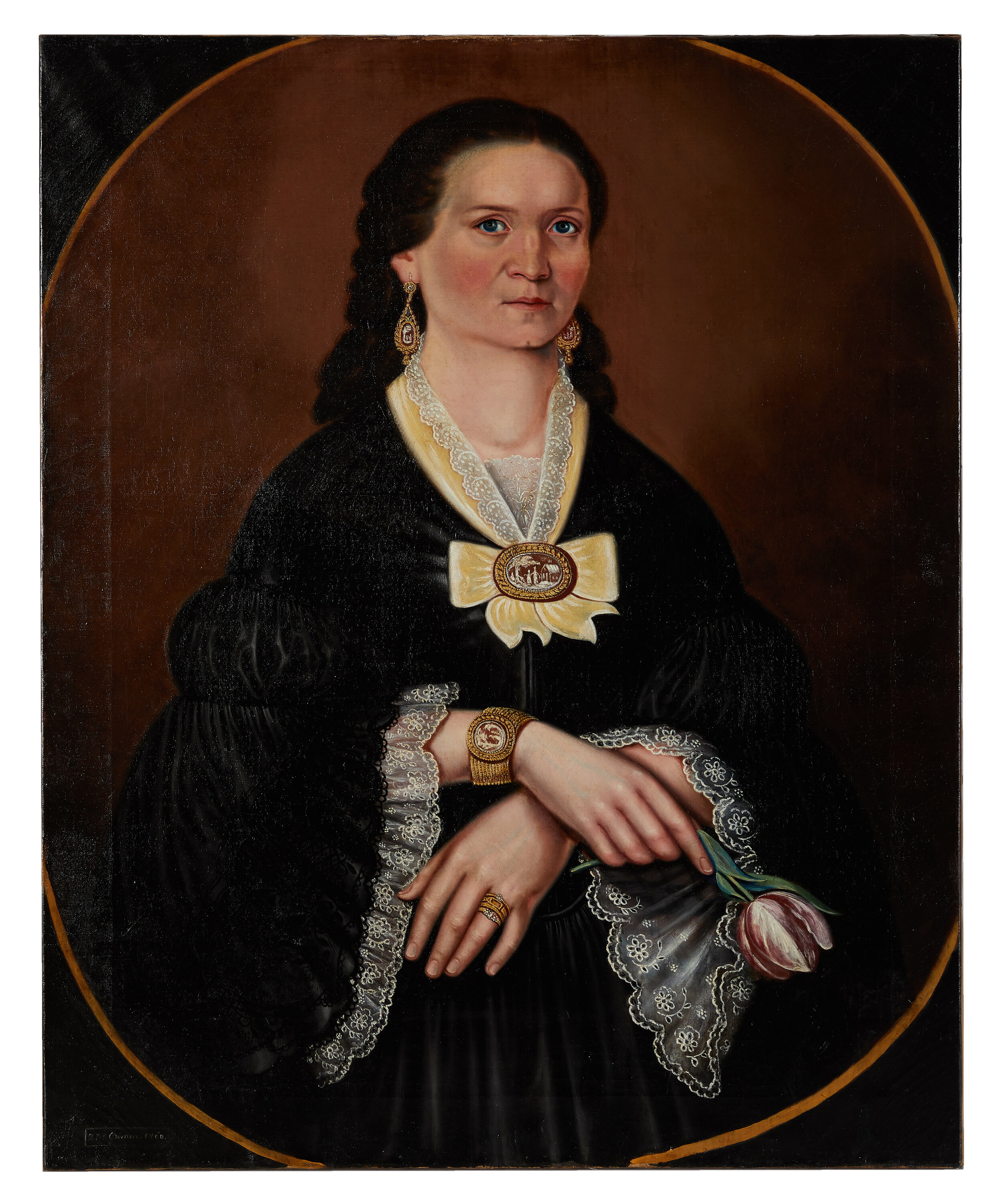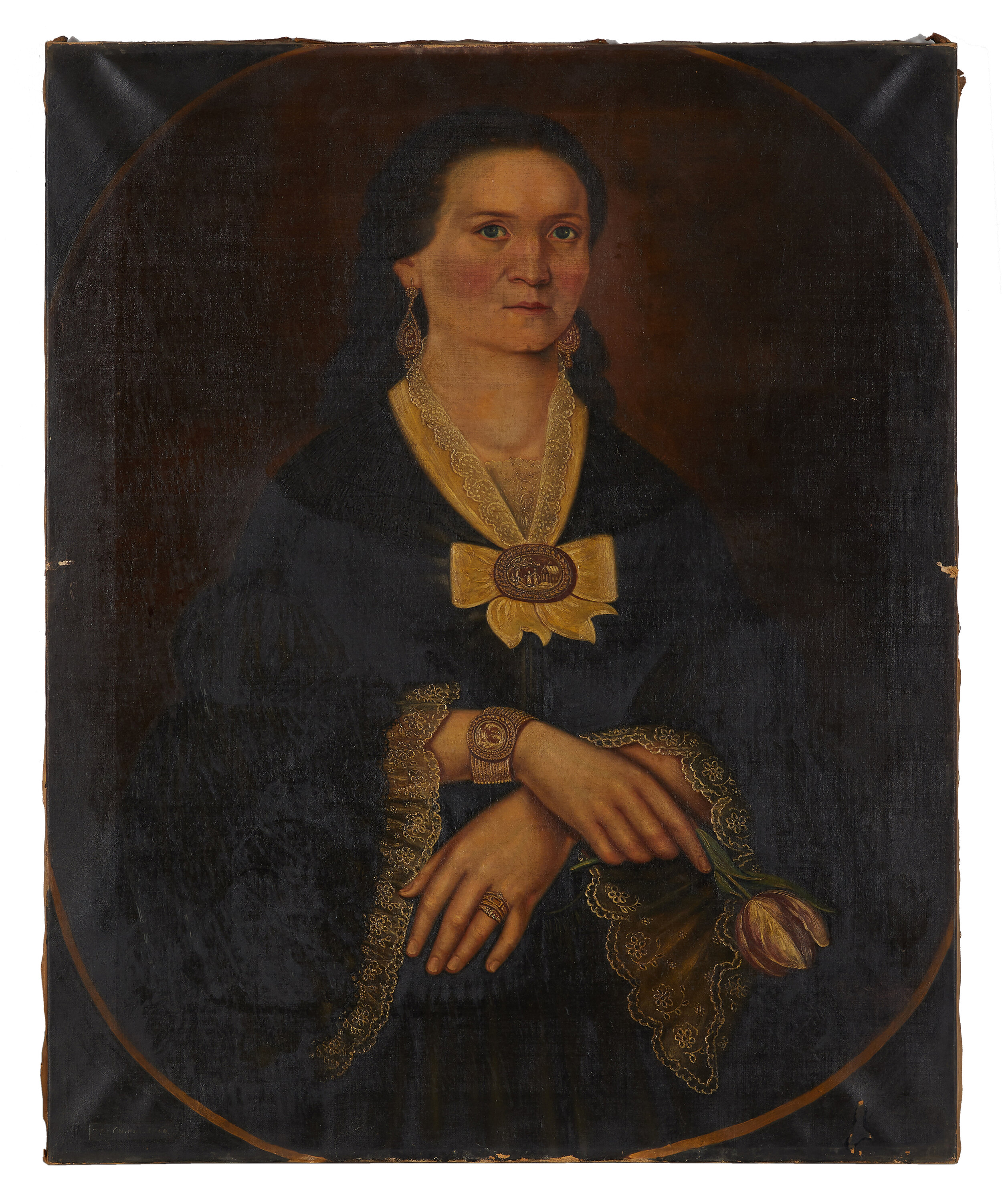When this darkened painting came to The Center for treatment, we knew we were working with a special piece of history. The subject of this portrait is an unidentified woman dating back to 1860, a time when only those of high status could afford to have oil portraits done of themselves. This piece of information gives little insight into who this woman was and the life she lived. She sits up straight with her hands crossed -- in doing so, she is able to showcase the gold jewelry that adorns her hands and wrists, and not-so-subtly shows off her wealth and class.
The painting before treatment.
An initial evaluation found several concerns with the supporting structure of the piece. It was missing keys causing the canvas to be slack on the support. The canvas also displayed some stretcher creasing along all four sides, again due to it being slack. A small hole was also found along the center of the right turn over edge that needs to be secured in order to add tension to the canvas.
The back of the piece before treatment.
The paint layer was determined to be moderately applied oil. In the lower left corner, the painting is signed "J.P.P. Grim. 1860." In the lower right corner, there was a large area of paint loss and well as some black tonal repainting. There were also areas of minor losses scattered along the center of the bottom edge and some minor frame abrasions spotted along the edges of the piece. The painting’s surface appeared to be coated in a natural, unevenly applied varnish that had experienced some discoloration over time. The left half of the painting appeared to exhibit water splatter accretions. Finally, the painting was coated in a moderate layer of surface grime which appeared to be embedded in the interstices of canvas weave.
Before treatment, under a blacklight.
After the examination, our conservators got to work. They started by locally consolidating the piece. This was done by flattening the deformations that appeared throughout the canvas as best as possible. This process involves the combined use of heat, suction, humidity, and weight techniques. The hole was mended with threads aligned and secured in place using conservation adhesive for reinforcement. The missing keys were replaced and the tension of the canvas was adjusted.
During treatment.
The painting was then cleaned using the appropriate aqueous solutions on cotton swabs. The varnish layer was removed as safely possible with appropriate solvents and then an isolating layer of varnish was applied. The areas of loss were then filled and textured using an appropriate conservation grade fill material. Inpainting was then carried out in areas of loss and abrasion using reversible conservation paints. Lastly, a final coat of varnish was applied to integrate the surface gloss and provide an added layer of protection.
After treatment.
It’s always interesting to know exactly who you are looking at when viewing a portrait, but in portraits like this when the subject is unnamed, it adds an added sense of mystery to the piece in which it’s up to the viewer to make the piece interesting to them. The clues of finery and high society only add to this sitter’s intrigue, and now she can draw in an audience for generations to come.








